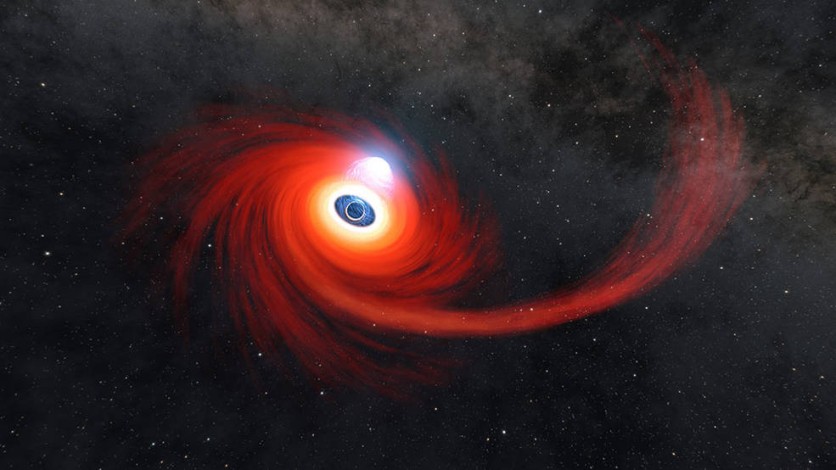A gigantic black hole that was tearing apart an unfortunate star that strayed too close was seen by many NASA telescopes.
It was the fifth-closest instance of a black hole obliterating a star ever seen, and it was situated around 250 million light-years away from Earth in the center of another galaxy.

High-Energy X-ray Photons
Astronomers noticed a sharp increase in high-energy X-ray photons around the black hole after the star had been shattered by the black hole's gravity.
This demonstrated that the star material created a corona, a very hot structure above the black hole, as it was drawn into its destruction. The close vicinity of the event offered an extraordinary perspective of the corona's formation, as per a recent study published in the Astrophysical Journal.
NASA notes that the study shows how the demise of a star by a black hole, also known as a tidal disruption event (TDE), can be utilized to learn more about what happens to a matter that a black hole captures but doesn't fully consume.
The new research focuses on an event known as AT2021ehb that occurred in a galaxy with a central black hole 10 million times as massive as the Sun.
The star was stretched out and reduced to hot gas during this tidal disruption event because the side of the star closest to the black hole was tugged more strongly than the opposite side, according to NASA.
According to scientists, the stream of gas is driven around a black hole and collides with itself. This is believed to generate X-rays, ultraviolet light, shock waves, and gas flows.
NASA explains that once this happens, the material starts to settle into a disk that circles the black hole with friction producing low-energy X-rays. In the case of AT2021ehb, the events took place in just 100 days.
Read Also : Scientists Discover Never-Before-Seen Details Through Hot Plasma Surrounding a Mass Black Hole
Telescopes Eye an Unusual TDE
The Zwicky Transient Facility (ZTF), housed at the Palomar Observatory in Southern California, first detected the event on March 1, 2021.
Later, it was investigated by NASA's Neutron star Interior Composition Explorer (NICER) telescope and Neil Gehrels Swift Observatory.
NASA's NuSTAR began studying the system after 300 days since the event was discovered. Since coronae typically form with gas that moves in the opposite directions from a black hole, scientists were astonished when NuSTAR identified a corona.
Yuhan Yao, the lead author of the new study, said that they have never seen a TDE with X-ray emission such as the AT2021ehb without a jet present.
"Our observations of AT2021ehb are in agreement with the idea that magnetic fields have something to do with how the corona forms, and we want to know what's causing that magnetic field to get so strong," Yao said in a statement released by NASA.
Related Article : NASA Detects Most Powerful Cosmic Gamma-Ray Burst, Signals the Beginning of a New Black Hole?

ⓒ 2025 TECHTIMES.com All rights reserved. Do not reproduce without permission.




